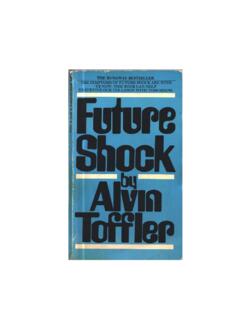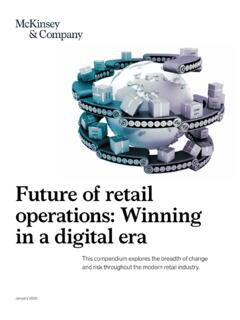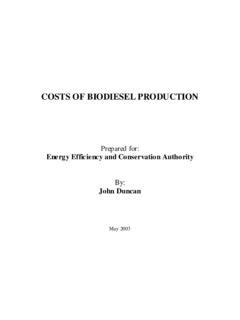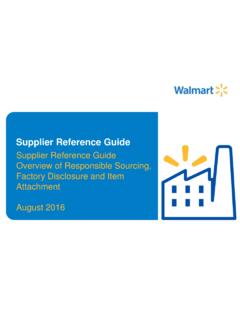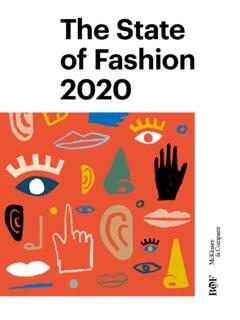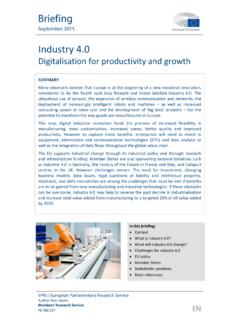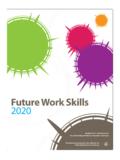Transcription of CONSUMER SURVEY REPORT - Fashion Revolution
1 CONSUMER . SURVEY . REPORT . NOVEMBER 2018. A baseline SURVEY on EU CONSUMER attitudes to sustainability and supply chain transparency in the Fashion industry. Fashion Revolution | CONSUMER SURVEY REPORT 2. CONTENTS. 03 Introduction 32 Q6 - What information Fashion 04 Quick Key Findings brands make available 33 Results 05 Q1 - Considering social and 36 Reflections environmental impact 06 Results 37 Q7 - Supply chain transparency 07 Reflections 38 Results 39 Reflections 08 Q2 - What specific issues consumers find important 40 Conclusions 09 Results 40 Recommendations for Fashion brands 13 Reflections 41 Recommendations for governments 41 Recommendations for citizens 14 Q3 - What information people want to 42 Credits know about their clothes 15 Results 18
2 Reflections 20 Q4 - Addressing sustainable development issues 21 Results 23 Reflections 25 Q5 - The role of government & policy 26 Results 30 Reflections Fashion Revolution | | CONSUMER . CONSUMER SURVEY . SURVEY REPORT . REPORT 3. INTRODUCTION. Fashion Revolution commissioned a SURVEY of 5,000 people aged 16-75 in the five largest European markets, including Germany, United Kingdom, France, Italy and Spain, to find out how supply chain transparency and sustainability impacts EU consumers' purchasing decisions when shopping for clothing, accessories and shoes.
3 5000 16 - 75 05. RESPONDENTS AGES COUNTRIES. We wanted to find out what information This SURVEY was conducted by Ipsos MORI 5th - 9th consumers would like Fashion brands to share October 2018. The analysis and REPORT was written when it comes to social and environmental by Fashion Revolution . impacts and to better understand what roles consumers think that governments and laws Technical notes: All figures are percentages. should play in ensuring clothing is sustainably Interviews were conducted online. Numbers produced. may not always add up to 100% due to computer rounding or multiple answers.
4 The SURVEY questions were designed to correlate with the following United Nation's Sustainable Base: 1088 adults aged 16-70 in Germany; 1100. Development Goals: adults aged 16-75 in France; 1094 adults aged 16- SDG 1 End poverty in all its forms, everywhere. 70 in Italy; 1098 adults aged 16-65 in Spain; 1129. SDG 5 Achieve gender equality and empower adults aged 16-75 in the UK. all women and girls. SDG 8 Promote sustained, inclusive and Fashion Revolution will use this research to inspire sustainable economic growth, full and consumers, companies and governments to each productive employment and decent work for all.
5 Play their role in driving long-term industry-wide SDG 12 Ensure sustainable production and change towards a fairer, safer, cleaner and more consumption patterns. transparent future of the Fashion industr SDG 13 Take urgent action to combat climate change and its impacts. This is a baseline SURVEY and will be conducted again in 2020 in order to measure changes in CONSUMER attitudes. Fashion Revolution | CONSUMER SURVEY REPORT 4. QUICK KEY FINDINGS. When buying clothes, more than one in three The majority of consumers also agreed that consumers surveyed across the five largest EU Fashion brands should be required by law to: markets said that they consider social (38%) and respect the human rights of everybody environmental impacts (37%).
6 Involved in making their products (77%). protect the environment at every stage of More people (39%) said that buying clothes made by making their products (75%). workers paid a fair, living wage was important than provide information about the social impacts any other topic surveyed, including: environmental of their business (68%). protection (37%), safe working conditions (31%), provide information about the environmental animal welfare (30%), local production (10%) and impacts of their business (72%). use of recycled materials (6%). say if they are paying the workers who make their products a fair, living wage (72%).
7 The majority of people think it is important for Fashion brands to reduce their long-term impacts 72% of people said that Fashion brands should do on the world by addressing global poverty (84%), more to improve the lives of women making their climate change (85%), environmental protection clothes, shoes and accessories. (88%) and gender inequality (77%). When choosing a Fashion brand to buy, consumers said it is important for brands to: More than one in three people publish how products are sustainable on the consider social and environmental packaging (72%).
8 Explain what products are made from on the impacts when buying clothes. packaging (77%). make it clear where they source materials, ingredients and components from and who The majority of consumers want to know more manufactured the product (77%). about the clothes they buy: share detailed information about wages and 67% of people would like Fashion brands to working conditions for people in its global tell them where the materials used in their supply chain (66%). products come from;. provide information about how they apply 59% would like to know how their clothes are socially responsible practices (70%).
9 Manufactured;. provide information about how they apply 61% of people are interested in learning about environmentally responsible practices (74%). what Fashion brands are doing to minimise their impacts on the environment and to A large majority of consumers think that Fashion protect their workers' human rights;. brands should publish the factories used 59% of people are interested in learning to manufacture their clothes (80%) and which what Fashion brands do to improve the suppliers they use to source the materials used in lives of people in the societies where they their clothing (77%).
10 Manufacture their products. The majority of consumers (68%) agreed that the government has a role to play in ensuring that 80% of people think Fashion clothing (including shoes and accessories) is brands should disclose sustainably produced. their manufacturers. Fashion Revolution || CONSUMER . Fashion Revolution CONSUMER SURVEY . SURVEY REPORT . REPORT 5. QUESTION 1. When purchasing an item of clothing, to what extent do people typically consider the social or environmental impact prior to deciding whether or not to purchase the item? SOCIAL IMPACT ENVIRONMENTAL IMPACT.
